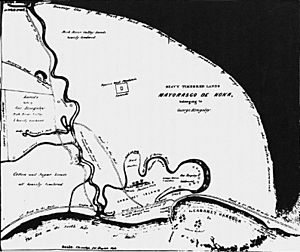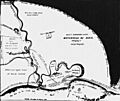Mayorasgo de Koka facts for kids

Mayorasgo de Koka was a very large piece of land, about 35,000 acres (142 square kilometers), located in what is now the Dominican Republic. Back in 1837, a man named Zephaniah Kingsley rented this land, and then he bought it in 1838.
At that time, white people were not allowed to own land in Haiti (which included this area). So, the land was officially put in the name of Zephaniah's oldest son, George Kingsley. George's mother was Anna, Zephaniah's partner. The land is on the north coast of the Dominican Republic, in the Puerto Plata Province.
A New Home for Freedom
Starting in 1828, the government in the U.S. Florida Territory began to pass laws that took away rights from free people of color. These were people who were not enslaved but had African heritage. Zephaniah Kingsley tried to fight these laws, but he wasn't successful.
Because of this, Kingsley decided to move his family to Mayorasgo de Koka. He also brought 53 people he had freed from his farms in Florida. These people became indentured servants, which meant they worked for a set time to pay off their travel or other costs, and then they would be completely free.
The laws in Haiti, which was the first independent country founded by former African slaves, promised equal rights for everyone. This was a big reason why Kingsley chose to move there. Anna Kingsley lived on the estate from 1838 until 1846, when she went back to Florida.
Life and Legacy at Koka
The main work on the Mayorasgo de Koka estate was farming. They also cut down mahogany trees for wood. As Kingsley's family grew, they started raising cattle. Over time, the large property was divided into smaller pieces.
Some of Kingsley's descendants moved to cities. Slowly, they lost control of parts of the land to local farmers. Even today, some descendants of Zephaniah Kingsley and the people he freed from Florida still live in the area. The town of Cabarete, which is now a popular place for windsurfing tourists, is located within what used to be the Mayorasgo de Koka plantation.
Today, there are no special signs or old buildings left to mark the historic site.
Images for kids
-
Map of Mayorasgo de Koka drawn by Zephaniah Kingsley.


